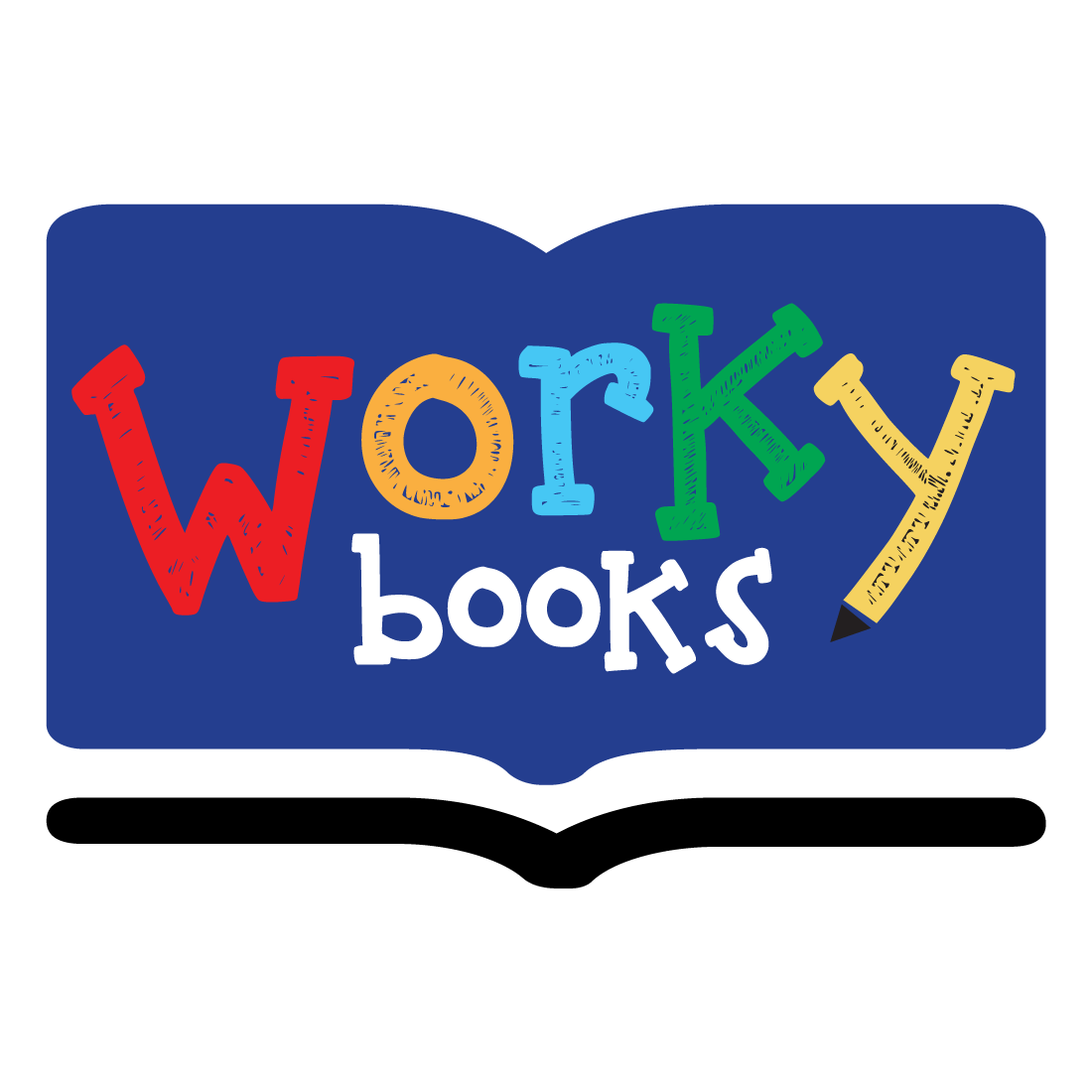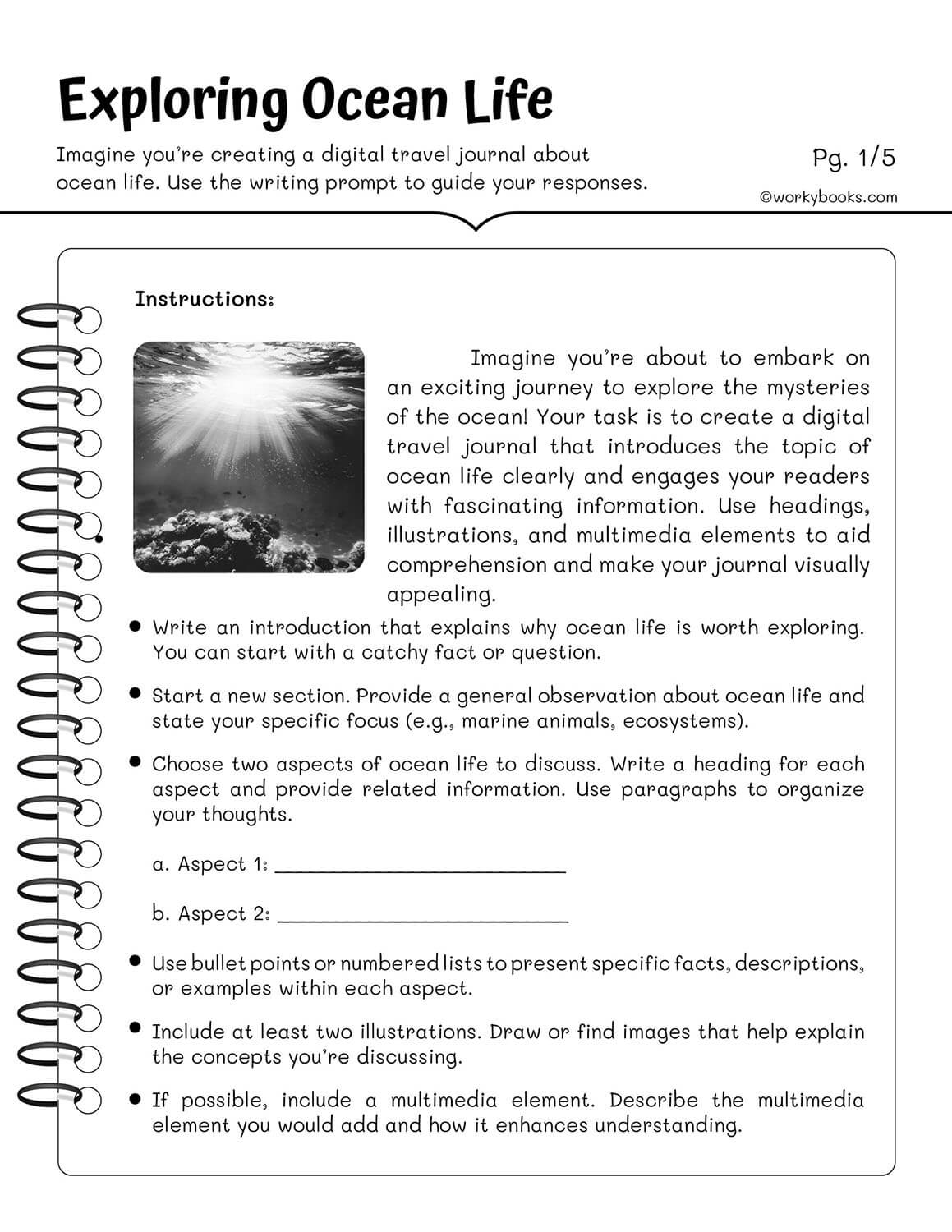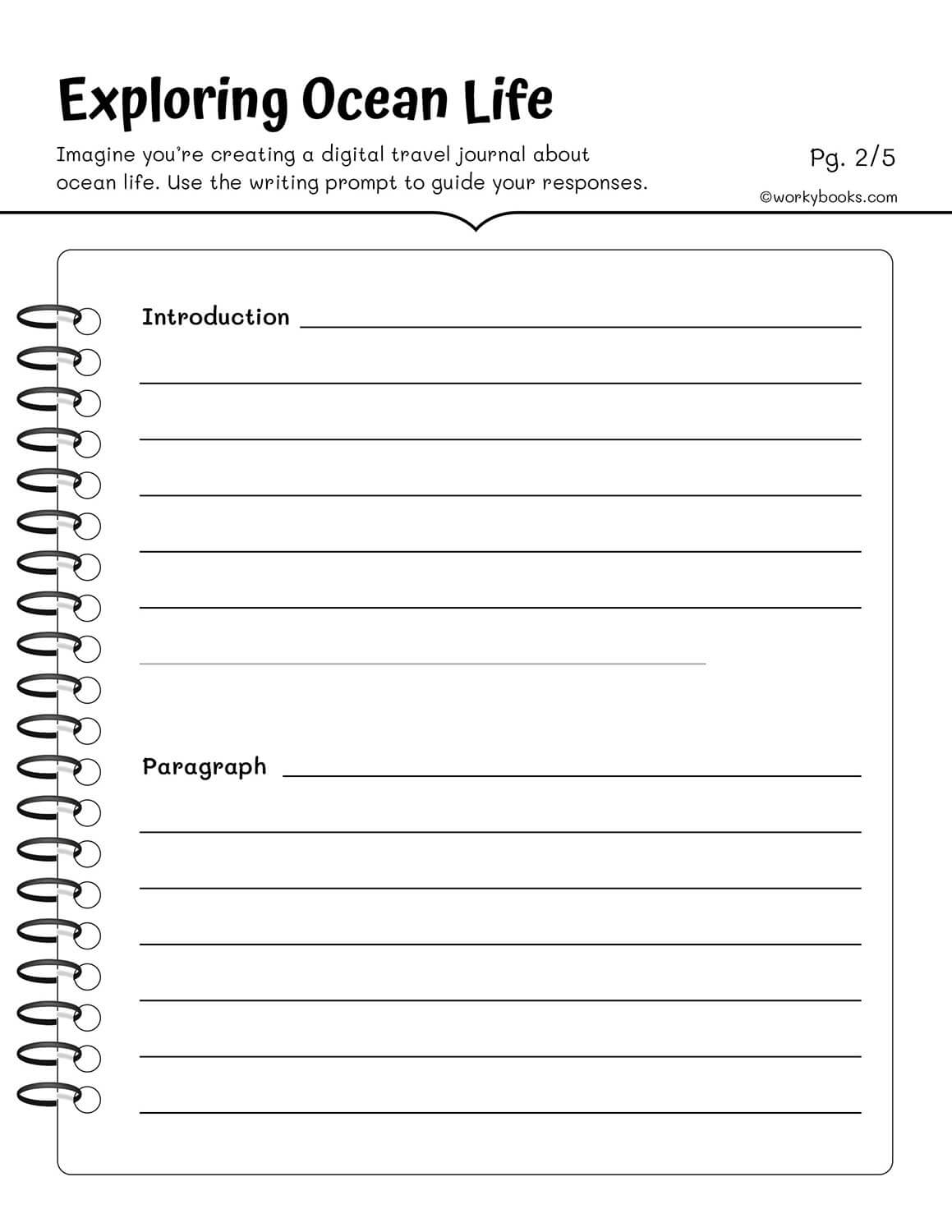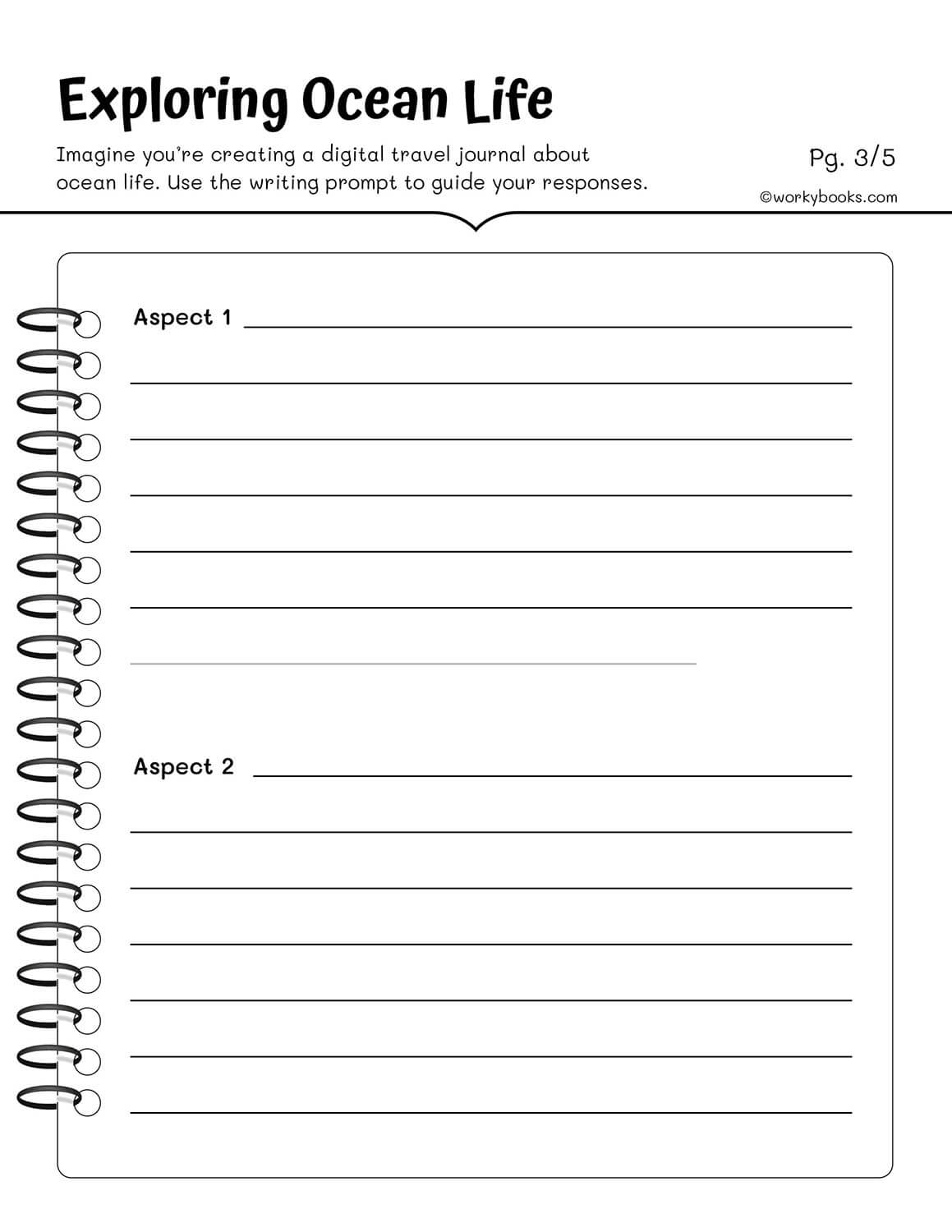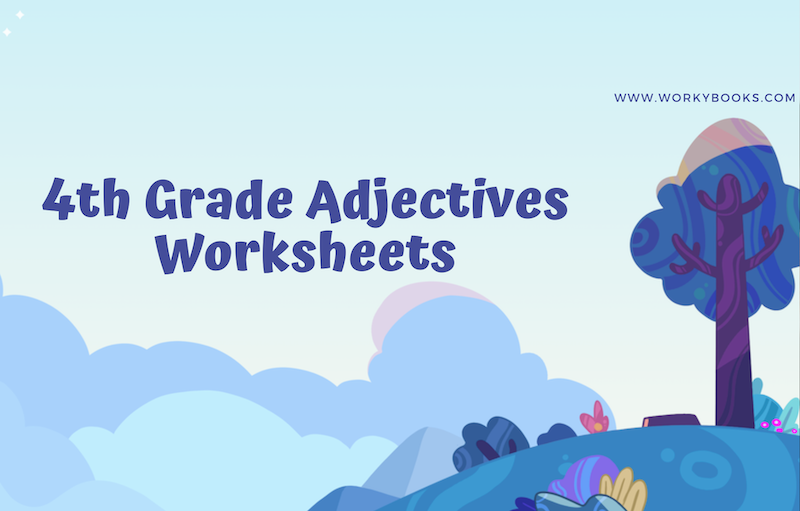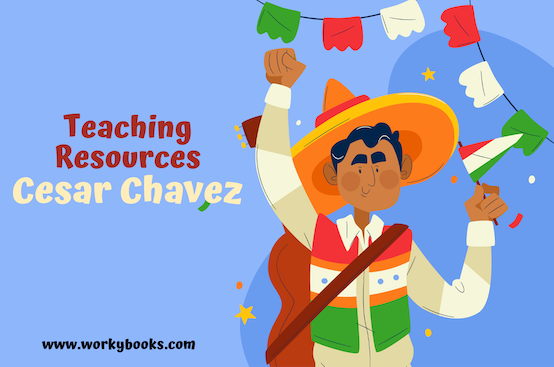Explanatory Writing Prompt- Ocean Science
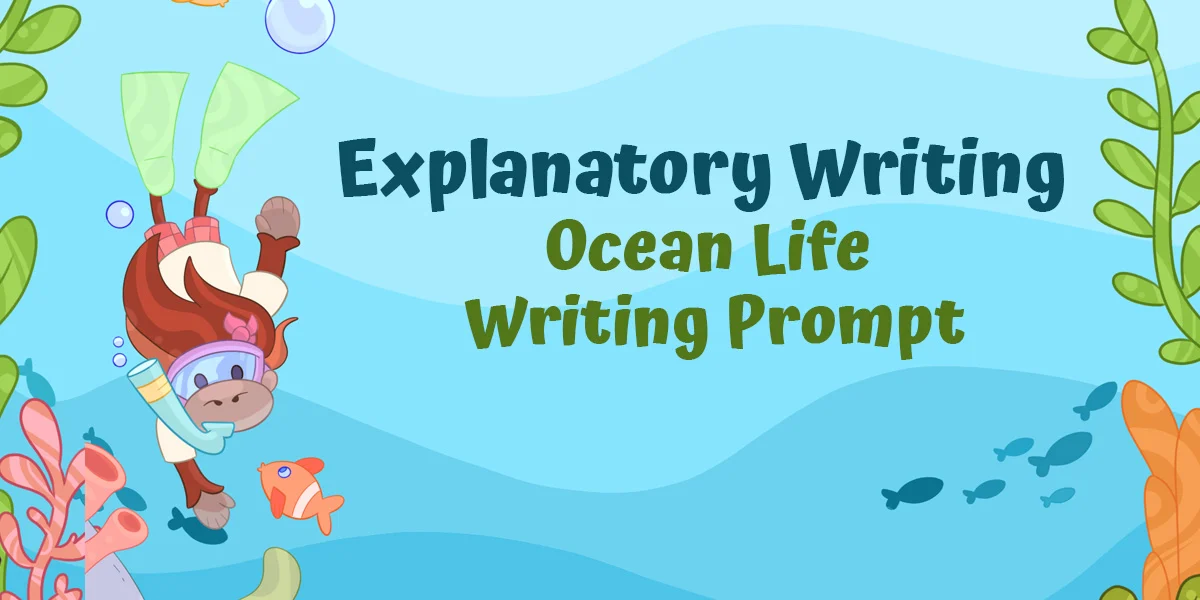
At Workybooks, we are always looking for ways to make explanatory writing engaging while aligning with key literacy standards. That’s why I was excited to introduce this creative ocean writing prompt to cover the Common Core writing standard CCSS.ELA-LITERACY.W.5.2.a on writing explanatory texts.
Teaching Target of CCSS.ELA-LITERACY.W.5.2.a
The 5th grade writing standard CCSS.ELA-LITERACY.W.5.2.a: covers writing explanatory texts to examine a topic and convey ideas and information clearly. An explanatory text explains how or why something happens, or provides more information on a particular topic. The goal is to make a concept, idea, or process clear for the reader.
The teaching targets are:
-
- Introduce a topic
- Thesis statement
- Main idea
- Relevant details
- Supporting examples
- Inform
- Engage
- Reader
What is explanatory writing?
Explanatory writing is used in various contexts, such as textbooks, news articles, scientific papers, and how-to guides. The primary purpose is to educate and inform the reader about a specific topic, concept, or process, helping them gain a deeper understanding of the subject matter.
How to write an explanatory essay
An explanatory essay is a type of writing where you explain or describe a topic to your readers in a clear and straightforward way. This ocean writing prompt challenges 5th grade students to create a digital journal while exploring the topic of ocean life. It’s a fun way for young learners to develop explanatory writing skills and learn about ocean science.
Imagine you’re creating a digital travel journal about ocean life. Use the ocean writing prompt to guide your responses.
- Explanatory writing prompt topic: Your task is to create a digital travel journal that introduces the topic of ocean life clearly and engages your readers with fascinating information. Use headings, illustrations, and multimedia elements to aid comprehension and make your journal visually appealing.
- Learn more: Find information from sources your teacher trusts to help you understand your ocean topic better and include facts in your digital journal.
- Plan your essay: Organize your ideas and the cool ocean facts you’ve found into an introduction, main paragraphs, and a conclusion. Provide a general observation about ocean life and state your specific focus (e.g., marine animals, ecosystems).
- Start with an introduction: Begin your digital journal with an exciting first sentence or question about ocean life, give some background information on your topic, and clearly state what you’ll be explaining.
- Write the main paragraphs: Divide your main points about ocean life into separate paragraphs. Each paragraph should focus on one main idea and provide detailed explanations, examples, and facts to support it, just like a travel journal entry.
Choose two aspects of ocean life to discuss. Write a heading for each aspect and provide related information. Use paragraphs to organize your thoughts.
Aspect 1: __________________________
Aspect 2: __________________________ - End with a conclusion: Summarize your main points about ocean life, restate your main idea, and leave your classmates with a final thought or a suggestion for how they can learn more.
- Check your work: Read through your digital travel journal to make sure there are no mistakes in grammar, spelling, or punctuation. Make sure your ideas flow smoothly and your explanations about ocean life are clear and easy for your classmates to understandRemember to :
- Use bullet points or numbered lists to present specific facts, descriptions, or examples within each aspect.
- Include at least two illustrations. Draw or find images that help explain the concepts you’re discussing.
- If possible, include a multimedia element. Describe the multimedia element you would add and how it enhances understanding.
Next, the writing prompt helps in setting the context with a broad statement about ocean life. This general observation also establishes their specific focus, whether that’s key ecosystems, marine biology, or types of sealife.
Students choose two related aspects of ocean science to discuss in detail. Adhering to logical paragraph structure, they organize information coherently under clear headings. Bulleted lists and numbered facts reinforce the grouped details.
Illustrations like original drawings or photos explain concepts visually. Students are encouraged to express their creativity using images. 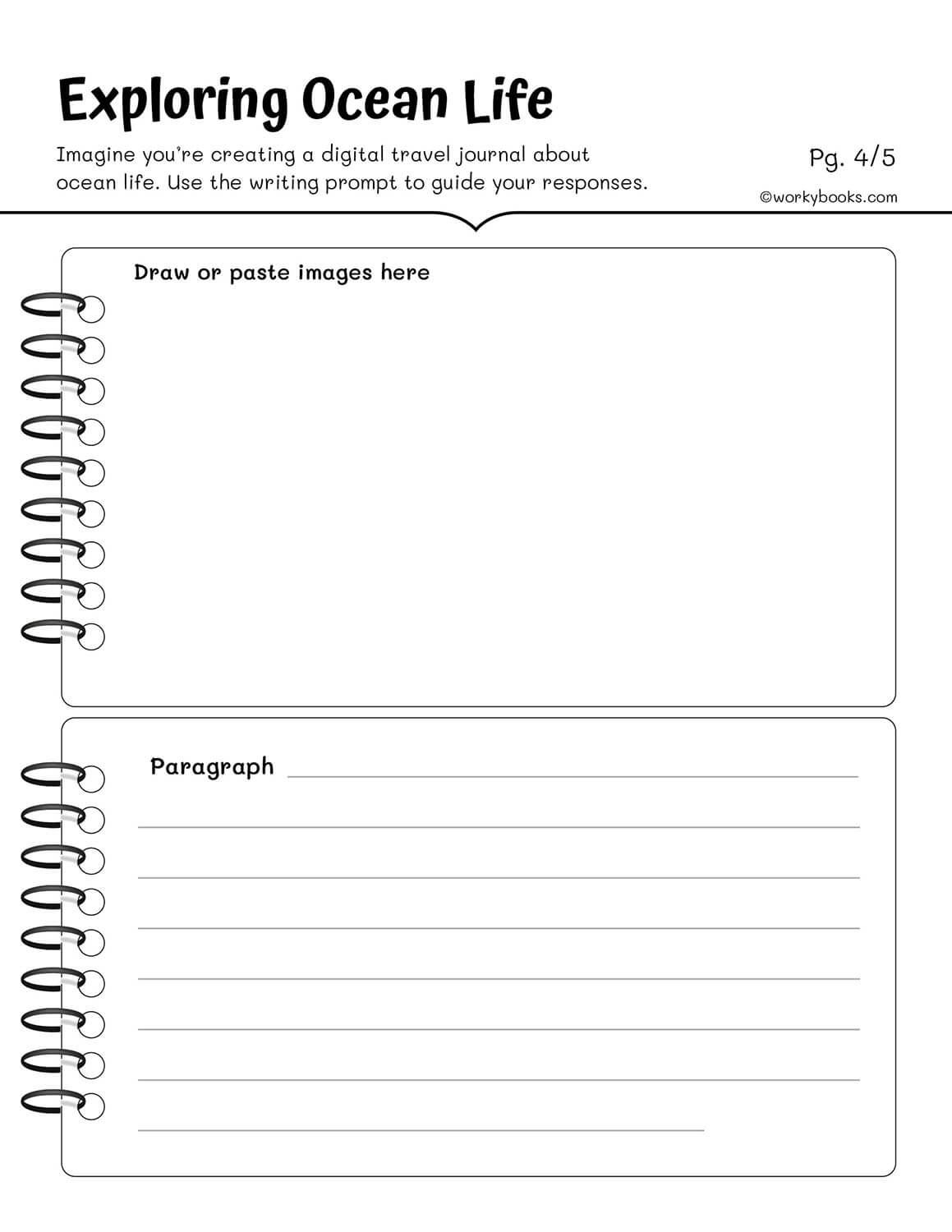
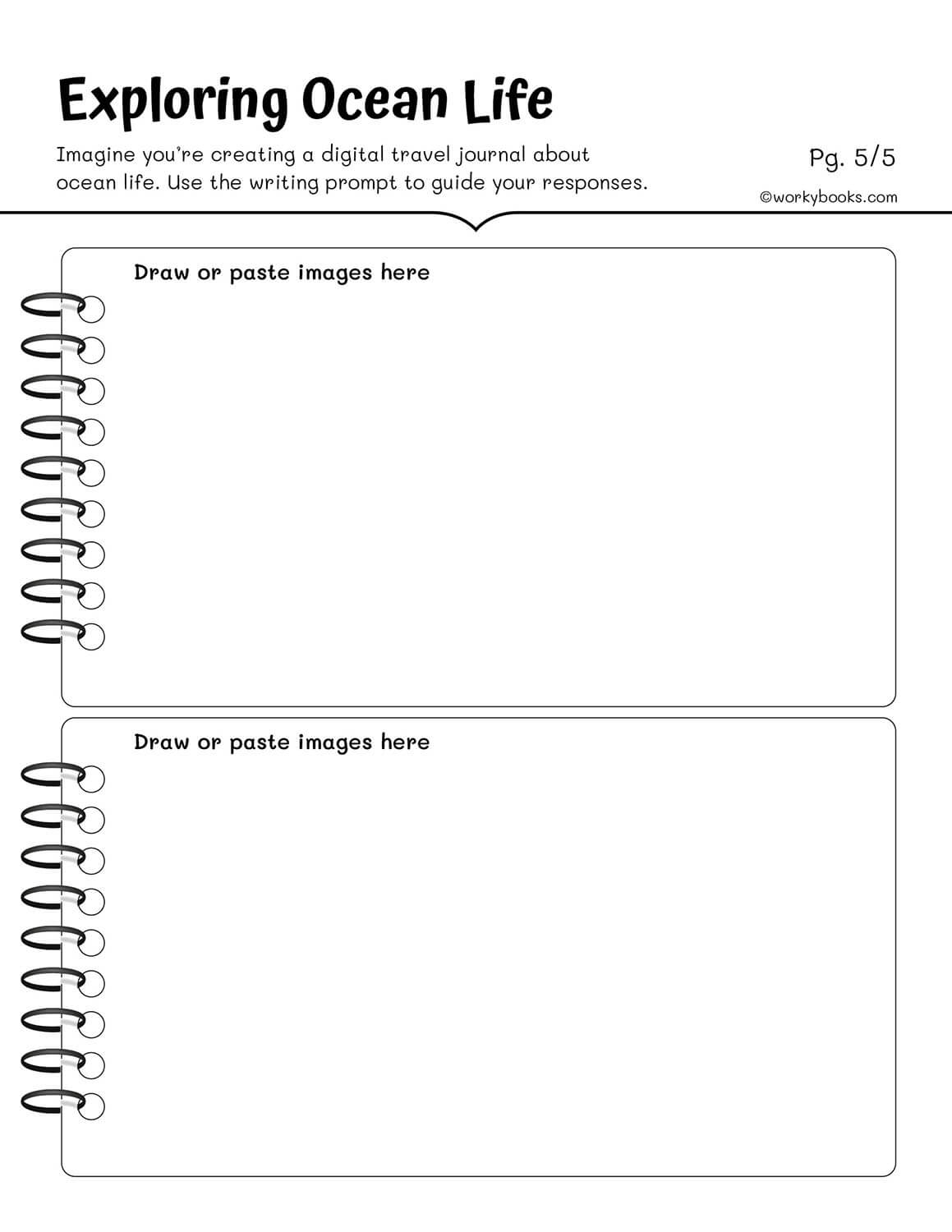
This ocean writing prompt helps 5th graders to dig into explanatory writing. They engage readers while illuminating a topic through facts, organization, media, and strong writing techniques. The result is an comprehensive well researches explanatory writing on wonders of ocean life!
If you’re looking to immerse students in engaging topics while targeting explanatory writing skills, give this 5th-grade worksheet a try! Please share your students’ work with me, I’d love to see their creativity on this ocean journal project.
Enjoy using this free resource in your classroom!
N.G.T
